How is sugar beet different from fodder?
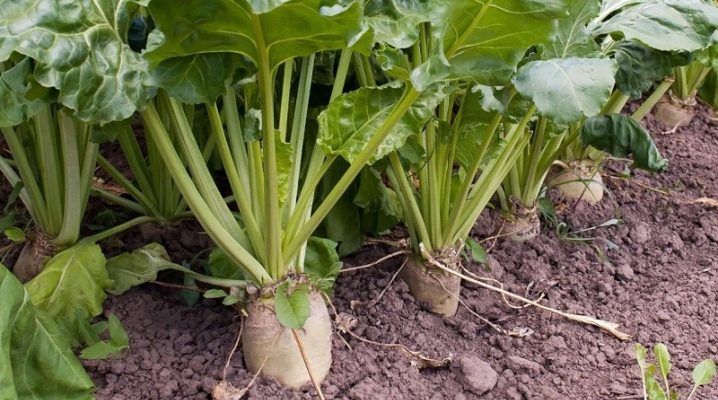
It is not advisable to use fodder beets for human nutrition. Despite its general purpose - for feeding farm animals, it does not have the same taste that a person is accustomed to. Hundreds of years ago, people ate beets of a quality that no one would eat today. Fodder, table and sugar beets vary significantly.
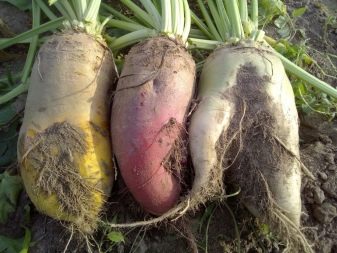

Visual differences
Along with potatoes and carrots, the vegetable in question holds one of the leading positions in demand and sales. All types of beets have an important feature: the larger the leaves, the larger the root crop. Organic substances stored through photosynthesis, as well as absorbed by the plant from the soil, entering in excess, contribute to the large size of the root crop.
In fodder beets, the peel is orange-red, the fruits are almost spherical, 35 leaves per each. The latter are bright green in color and oval in shape. Sugar beet has a grayish-whitish color of the peel, the fruit is elongated in shape, the leaves grow on long petioles that match the color of the root crop. Each fruit has 50 leaves. By these external signs, it is easy to distinguish one variety (species) from another.
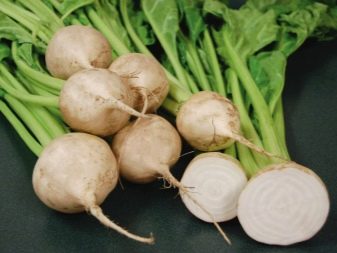
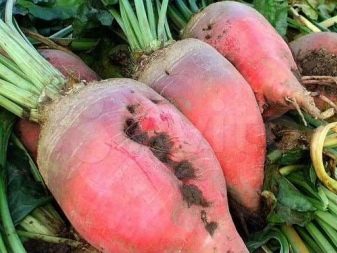
Difference in chemical composition
Beetroot contains almost no sugar. However, cattle do not need it in large quantities. In fodder fruits, it is only 2%. Theoretically, chopped beets can be sweetened with sugar or honey, and can be eaten by humans. - in small quantities, and he will not notice much difference, and the relative cheapness of the product (you can buy a bag at an inexpensive price compared to beetroot) will play in favor of the wallet. In addition, fodder beets contain a lot of vegetable protein - up to 12%, which is comparable to most cereals. However, a significant amount of cellulose (fiber) makes fodder beets difficult to digest: overworking the digestive system can lead to premature chronic diseases.
The stomach of a bull or cow is adapted to a large amount of fiber - a person will experience severe discomfort. It is not recommended to get carried away with the consumption of fodder beets. Sugar beets, on the other hand, are rich in sugar - about ⅕ by weight. She is extremely poor in proteins. Excessive consumption of unprocessed sugar beets can cause a person to have persistent high blood sugar levels. As with pure sugar, it should not be overused. It will not replace other sources of protein.
A large amount of sugar accumulates in root crops due to vessels of a special structure, which are absent in fodder beets.

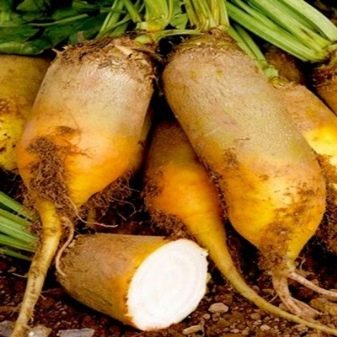
Growing goals
Fodder beets are grown, for example, when the owner of a suburban farm or dacha has one or more cows, pigs or horses. Fodder and leafy beets provoke excess milk production in cows and goats, keeping them in good health. The purpose of growing fodder beets is to maximize milk yield, as well as to fatten some of the young cattle for slaughter. Animals eat not only root crops, but also tops - it contains almost all vitamins.
Sugar beets are used for sugar production. The breeders have developed the most sugar-containing varieties of the vegetable in question, which make it possible to obtain more crystallized sucrose.On vegetable farms, whose goal is to supply the nearest sugar or confectionery plant with sugar, from each hectare you can get up to tens of tons of sugar beet, practicing crop rotation, for example, with corn, rye and wheat.
Waste (cake, tops) from sugar beet processing is used for fattening livestock - as an additive to fodder root crops.
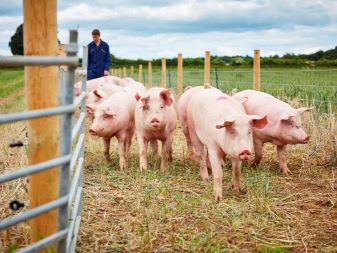

Comparison of other characteristics
For successful activity in the production of fodder and sugar beets, it is not enough to know its chemical composition and the schedule of irrigation, feeding and protection from pests. An important role is played by the growing period (from sowing seeds to harvesting), cultivation and care agricultural technology, yield (quality and quantity of fruits, their total weight per hectare of field).
Yield
The total weight of fodder beet fruits is up to 60 tons per hectare. The minimum amount is half. If the yield is less than 30 tons, then the next year, at the new site, fertilizing is performed, and the chemical composition of the soil is adjusted. In the best case, the harvest of fodder beets is obtained within 110 days from the date of planting of seeds.
Sugar beet yields are about half as much - 18 ... 30 tons. For such a low rate, the owner of the site receives fruits with a high sugar content. A clear, linear relationship between the tonnage of harvested fruits from 1 ha is not observed - the yield depends on irrigation, soil saturation with nutrients, correctness, regularity of feeding, and the adequacy of pest control measures.
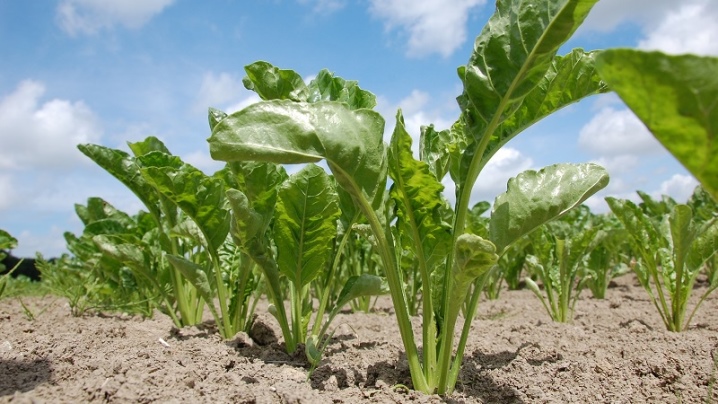
Growing season
For fodder beets, the growing season (full life cycle) is up to 5 months. For growing vegetables in the central and northern regions, greenhouses, hotbeds and greenhouses are used. The sugar species can grow completely in six months (which is on average a month more), which is why it is widespread in the north and in central Russia. The growing season differs on average by a month.
However, short-term drops in temperature (night frosts) to -8 (in the morning) are easily tolerated by seedlings - so, in the regions of the Urals and Siberia, this phenomenon is observed until mid-May. Short-term, but frequent frosts slow down the growth and development of plants, which is why the harvest can be significantly delayed or not obtained at all. This forces farmers to use greenhouses, possibly with partial heating at night. Flowers in both varieties - sugar and fodder - are grouped by 2 ... 6 in yellow inflorescences.

Growing technology
You need to loosen the soil by planting the seeds of fodder beets in a week - during this time the seedlings will grow a little. To grow good tops, weed control should be carried out - weeding is carried out several times. A month before harvesting, watering is completely excluded. In case of rains, water can be diverted between the rows. Protection against pests is carried out using mineral fertilizers. Industrial cultivation of fodder fruits from 1 ton will require the use of nitroammophos compounds, which are added to the ground when digging up a plot or field (before planting).
In the case of sugar beet growing, planting care is as follows:
- planting seeds is carried out at a distance of 18 cm in each of the four sides;
- after planting, abundant watering is performed - sprinkling gives a good result;
- fungicides and pesticides are used to protect against pests;
- before the end of the growth of root crops, weeds are weeded between the rows.
To fertilize growing root crops in a limited area, folk remedies are used: mullein and chicken droppings, urine, as well as human waste fermented for three years (compost), vegetable and fruit peelings, seeds and seeds, rotten fruits and seeds not collected on time during the harvest season, cut weeds and other organic material. Organic matter must be diluted in low concentrations - no more than 2 ... 5%, otherwise the roots of beet plants, like any garden crop, will burn. Ashes, ash and soot obtained from burning wood materials serve as mineral fertilizers.
To obtain the maximum yield, potassium, nitrogen and phosphate salts (fertilizers) are used, for protection from pests - iodine, boric acid, potassium permanganate, ammonia, laundry soap and other folk remedies, as well as plant siderates that repel harmful insects, fungus, mold, etc. microbes.
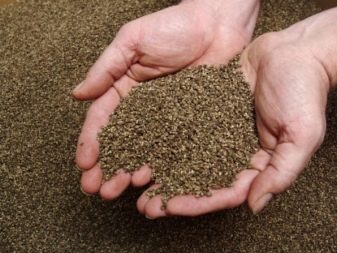
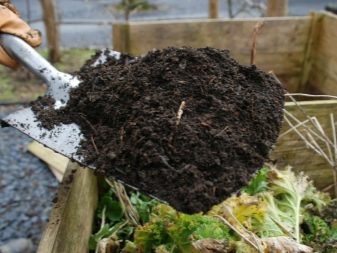
The planting depth of growing and grown fruits of fodder beet is characterized by its peculiarity - roots stick out a few centimeters from the soil. In sugar beets, only the tops “look” outward - the fruits are completely in the ground. The discoloration of the top of the fodder beet is due to its exposure to the sun. In this way, it partly resembles a turnip, the roots of which are also not completely immersed in the ground - they protrude slightly from it, but not so noticeably. Hilling of fodder beets is not allowed: root crops should not be completely immersed in the ground. The root of these fruits rarely reaches a significant (from 1 m) length: the root system of such beets is much weaker, which forces it to be watered more often than sugar.
But in sugar root crops, the root stretches up to 3 m, like a rope, plunging largely into the (su) clay horizon. This allows the fruit to survive the dry period by pumping moisture from the layer that almost never dries out. But this does not mean that beets can be grown in wetlands with a high level of groundwater: deprived of air, the root will "suffocate", and the plants will wither, you will not be able to use them as a kind of pump for pumping out excess moisture, in which the earth is deprived of air and turned into finely dispersed mud.
Unlike fodder beets, sugar beet grows poorly in podzolic taiga soil, on salt marshes, fertilized quarry sand or in ordinary sandy loam - it requires black soil or chestnut soil, flavored with compost and peat.
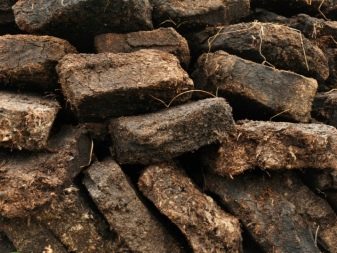
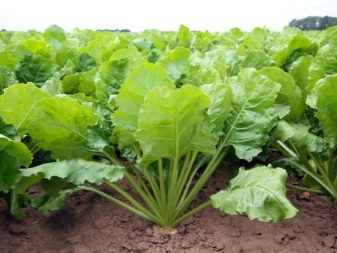











The comment was sent successfully.